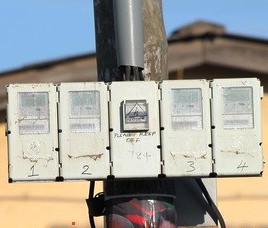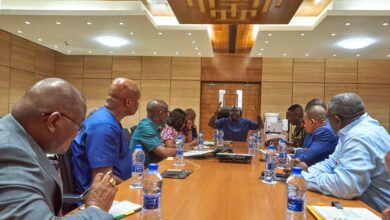
Consumers in six regions could pay 45pesewas more for power supply if the request by Northern Electricity Distribution. Company Limited ( NEDco ) gets Public Utilities Regulatory Commission (PURC) approval.
Residents in the Upper West, Upper East and Northern Regions and those in the upper part of the Volta, Brong Ahafo Regions as well as some communities in the Western Region, could pay ¢0.6755 per kilowatt/hour – a jump from ¢0.22 per kilowatt/hour.
The last tariff review was in 2015.
More than two years since the review, the PURC has assembled players in the power generation and distribution chain in Accra to make a case for an increase in tariffs.
Armed with a Powerpoint presentation to justify its request, NEDco Engineer, Dan Lardy explained what the power distribution company has done to improve power supply since the last review.
He said NEDco has bought 125,000 prepayment meters, 200 distribution transformers and finally upgraded its customer billing management system after 12 years.
NEDco posted performance results which show that power interruptions decreased from 147.1 hours throughout the year 2016 to 116.5 hours in 2017
In terms of the number of times, power was interrupted 132.4 times throughout 2017, an improvement from the 159.5 times in 2016.
Despite the improvements, the Engineer explained that NEDco faces significant challenges distributing power to its 823,000 customers because they are scattered over a very wide area.
It means more lines, equipment is needed to transmit power over long distances just to serve small populations dotted around the regions.
To complement this task, NEDco had to buy 36 vehicles, 35 motorbikes and build 10 customer service centers to improve customer relationship.
He argued the cost of sending power providing services is not commensurate with the revenues it makes from its work.
Providing data to back this claim, the NEDco engineer explained the company makes more revenue from the 18% non-residential consumers which bring in 45% of its income.
But it takes 81% of residential consumers to generate another 45% of revenue although this segment consumes 62% of power.
In essence, NEDco says, it makes less from more power it distributes.
He put NEDco’s commercial loss for 2017 at 11.3%, a figure he described as high and also expressed worry about hostile customers they face when collecting revenue.
NEDco also wants to build a befitting six-storey headquarters in Tamale for ¢36m and a regional office in Techiman in Brong Ahafo region.
He said NEDco has budgeted 10% of its 2018 budget to start at least the foundation of the building and is looking for other sources of funding.
A powerpoint presentation which summarised the company’s 2017 operational year, showed NEDco made a loss of more than 10m after buying 596million cedis worth of power.
Operations cost for the year was put at ¢550 million while a recurrent theme of cedi depreciation wiped off more than 100m cedis.
He said it planned to invest ¢118million in 2017 but raised only ¢79m. If it does not raise funds to match its investments, the efficient power supply could decline.
“So whatever Madam [Maame Dufie Ofori, Executive Secretary of PURC] gives me, will reflect in what the customers get,” he said.

